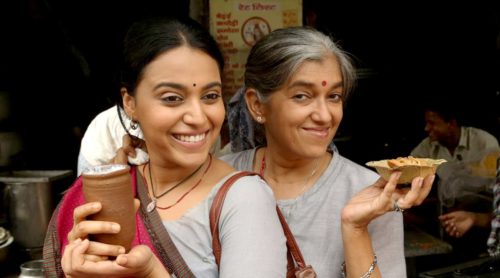June, 2021
Movie review: An intersectional analysis of the movie Nil Battey Sannata, a 2015 Indian Hindi-language comedy-drama film directed by Ashwiny Iyer Tiwari
3 minutes read
Set in the backdrop of the picturesque city of Agra, Nil Battey Sannata gives us a peek into the inner lives of Chanda (played by Swara Bhasker) and her daughter, Apeksha. The movie premiered in 2015 and was the directorial debut of Ashwiny Iyer Tiwary. The film juxtaposes the mother-daughter duo’s personal joys, aspirations and ordeals, against the larger socio-economic framework that renders them to the margins of society. This poignant and almost fairytale-like narrative is propelled by a colourful accompanying cast.

Chanda is a highschool dropout, domestic worker and single mother who dreams of disrupting the status quo by providing education to her daughter. Apeksha, on the other hand, is a fun-loving teenager who expresses disinterest in academics. She seems to be heavily disillusioned by the prospect of upward mobility. She harbours the notion that she is bound to follow in her mother’s footsteps and pursue the same profession as her. Along with the clashing ideals of the two main characters, the film also quietly explores the classism and elitism implicit in our systems.
One of the many remarkable aspects of the movie is the realism in its portrayal of the habitus and the social environment of the leads. A class-conscious (albeit caste-ignorant) approach has been painstakingly followed in the making of the movie. Well-rounded characters with complex personalities have been depicted as opposed to presenting caricatured characters who lack substance. For instance, in this cinematic universe, Chanda is a doting mother who is resourceful and performs multiple jobs to make ends meet. She slogs tirelessly in an upper-middle class household as a domestic worker, works part at a factory and also has a stint at a local eatery.

The relationship between Chanda and her employer, Mrs Diwan, is indeed noteworthy as it is reflective of mainstream employer-employee relations in the domestic work sector. Chanda and Mrs Diwan seem to share a cordial bond which often edges towards being symbiotic. Although power hierarchies remain intact and most of their interactions are girdled by a tinge of paternalism on her employer’s part, Chanda greatly admires her and trusts her judgement. She turns to her for advice regarding her daughter’s future and keeps her in the loop about the happenings of her life. Chanda garners a sense of emotional security from their interactions. Mrs Diwan also provides her with material support from time to time. In one instance, Mrs Diwan leverages her connections to help Chanda get in touch with a maths tutor for Apeksha. In this sense, Mrs Diwan’s household is not just Chanda’s place of work, but is also a place of production of values and subjectivities.
Despite its overall feel-good persona, the movie has certain tone-deaf elements to it. In an attempt to depict the role played by hard work in ascending the socioeconomic ladder, the narrative inadvertently reproduces the stigma attached to marginalisation. When Apeksha utters that she would grow up to become a domestic worker just like her mother, hinting at the rigid hereditary occupational divide in our society, Chanda is appalled. She flies into a fit of rage and rebukes Apeksha for giving in to her fate. Mrs Diwan too expresses stark disapproval of Apeksha’s statement when Chanda fills her in about it. Mrs Diwan’s reaction not only lacks nuance but also betrays the fact that she considers domestic work to be a rather lowly profession. Care could have been taken to not perpetuate the existing stigma surrounding the informal sector. Besides, it is also somewhat of a counterproductive plot device.
Our systems are designed to systematically exclude and invisibilise minoritised groups. In this context, Chanda’s is a fight for visibility and equal opportunity. She has a fire in her belly and seeks to defy all odds. Chanda and her daughter manage to reconcile despite the initial volatility in their relationship in a heartwarming series of frames. That is what stood out to me in this dreamy, sanitized and tailored-to-be-palatable narrative.

Leave A Comment